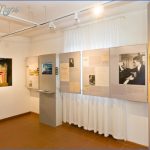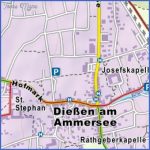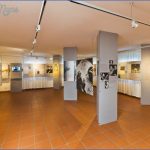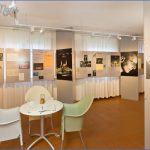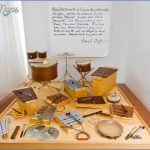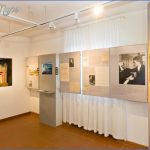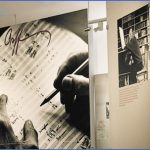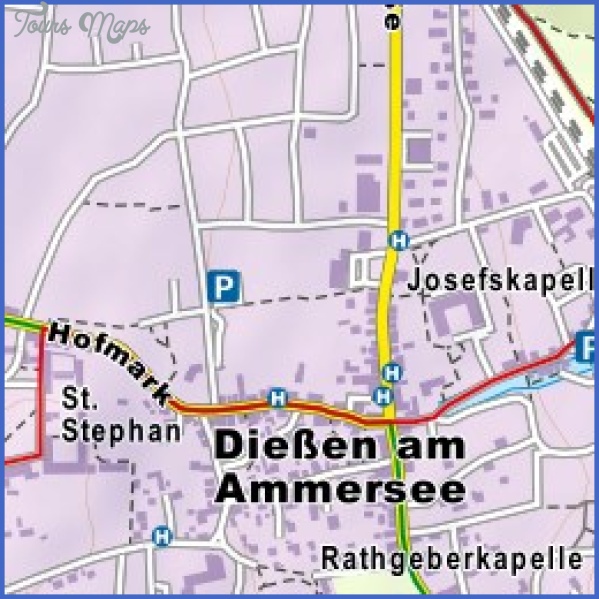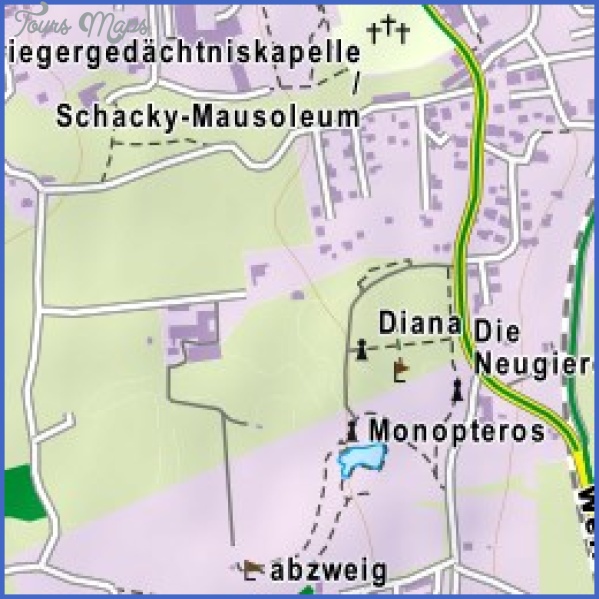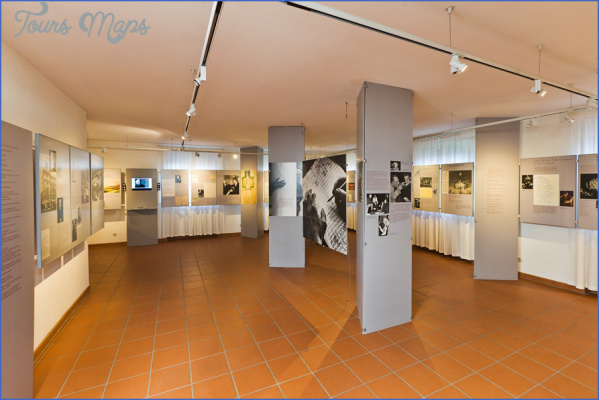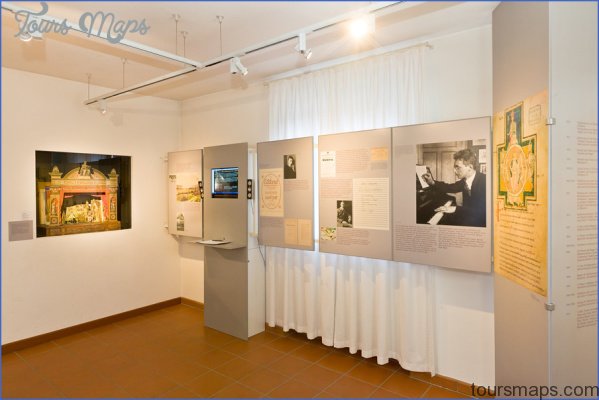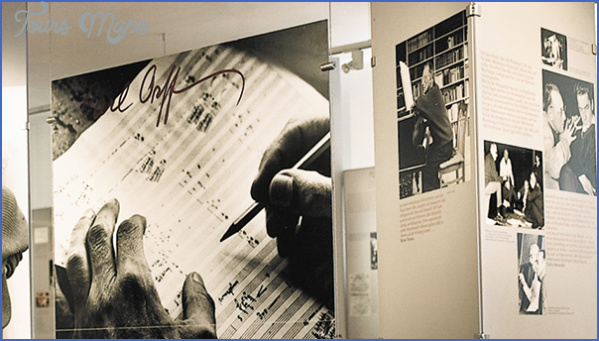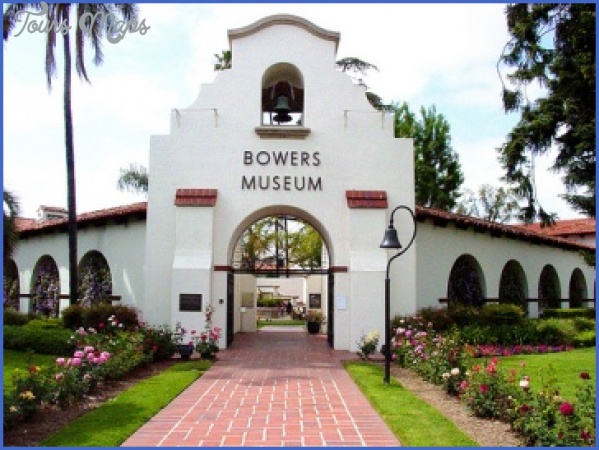ORFF MUSEUM
Carl Orff, known to millions around the world for Carmina Burana (1937) and music education for the masses, was a Munchner. He was born in 1895 into a military family and lived until he was 14 in Maillinger Strafie, near the entrance to the Englischer Garten (the building has been replaced by a block of flats, at no.30, but his birth there is acknowledged with a plaque). He was educated at the Munich Akademie der Tonkunst, held a succession of conducting appointments and, from 1950 until his retirement in 1960, taught composition at the Staatliche Hochschule fur Musik.
In 1924, Orff and Dorothee Gunther founded the Guntherschule, for gymnastics, music and dance: the basis for the Orff-Schulwerk movement. In 1936 the Guntherschule moved to Kaulbachstrafie 16; the building suffered bomb damage during the war and was rebuilt, becoming a private residence until 1990, when it was refurbished as the Orff-Zentrum Munchen. Its aim is to preserve Orff’s legacy and to promote the study of his life and work. It contains primary documents, music manuscripts and audio-visual materials, which are available for study. Upstairs there is a Teatrino seating 60-70 for concerts and symposiums. Cases in the staircase display instruments and artefacts donated by Orff’s fourth wife, Liselotte Schmitz Orff.
ORFF MUSEUM Photo Gallery
In 1955 Orff and his third wife, the novelist Luise Riuser, settled in Diessen, a small town 50 km south-west of Munich, on the west side of the Ammersee, set in the foothills of the Bavarian Alps. Orff knew the area well: his parents had had a country house near Diessen, at the village of Unteralting. He and his wife bought a farmhouse at Ziegelstadel 1 in the district of Diessen-St Georgen, near Schatzberg, with views of the lake and the 15th-century hilltop monastery at Andechs. An outbuilding was fitted out as a guesthouse, with Orff’s study upstairs, and connected to the main house by a covered walkway, which combines with the periphery hedges (six varieties to attract and harbour different breeds of birds), giving the impression of a sanctuary. The enclosed area around the house shelters an outdoor eating area, a kitchen garden and a fish pond. This was Orff’s home for the rest of his life. Visitors are welcome, by appointment through the museum (see below). Photographs show that his large study remains just as it was in his day. Between the windows are neatly organized bookcases: art books and Greek literature here, reference books, musical scores (shelved according to size) and educational tomes there; there are also books on music, books about Orff and a collection of LPs. The centre of the room is given over to musical instruments: his Bechstein boudoir grand as well as an Orff’s study at Diessen upright piano and all kinds of percussion – cymbals, glockenspiels, bongos, a bass drum, woodblocks, tambourines, triangles, timpani and xylophones, including an electric one given to him on his 80th birthday. On his desk, next to a window, are his pipes, personal photographs, pens and a stopwatch. In the remaining corner, by the green tiled stove, is a comfortable sofa and chairs. Here he composed his seven last stage works, including Oedipus der Tyrann, the final version of Ein Sommernachtstraum, Prometheus and De temporum fine comoedia, and several choral works.
In 1959 Orff and Luise were divorced and the following year he married their assistant, Liselotte, in the Klosterkirche at Andechs. He died in a Munich clinic, on
29 March 1982, and was interred in the Andechs Capella Dolorosa. Their house in Diessen was always a meeting place for young musicians and music educators, and since his death it has been a place of pilgrimage, although not formally open to the public.
In 1991 the Carl-Orff-Stiftung established by his widow opened a small museum in the centre of Diessen. On the ground floor of the museum are the reception and a large display room where his life and works are chronicled, with special reference to Der Mond, Carmina Burana, Trionfi and Die Bernauerin; the basement is devoted to the Orff-Schulwerk, with facilities and Orff percussion instruments available for workshops. The emphasis throughout the museum, conveyed in photographs, videos and on CD-ROM, is on Orff the communicator through his work as a composer, conductor and educator. The Carl-Orff-Stiftung also offers support for projects relevant to the Orff-Schulwerk and in 1997 inaugurated a biennial singing competition in his memory, held in Munich at the Bavarian Academy of Fine Arts.
Orff’s educational work is continued at the Orff-Institut Salzburg, founded in 1963 as a department of the Mozarteum, and through the Orff-Schulwerk Forum, also in Salzburg.
Maybe You Like Them Too
- Top 10 Islands You Can Buy
- Top 10 Underrated Asian Cities 2023
- Top 10 Reasons Upsizing Will Be a Huge Travel Trend
- Top 10 Scuba Diving Destinations
- World’s 10 Best Places To Visit

